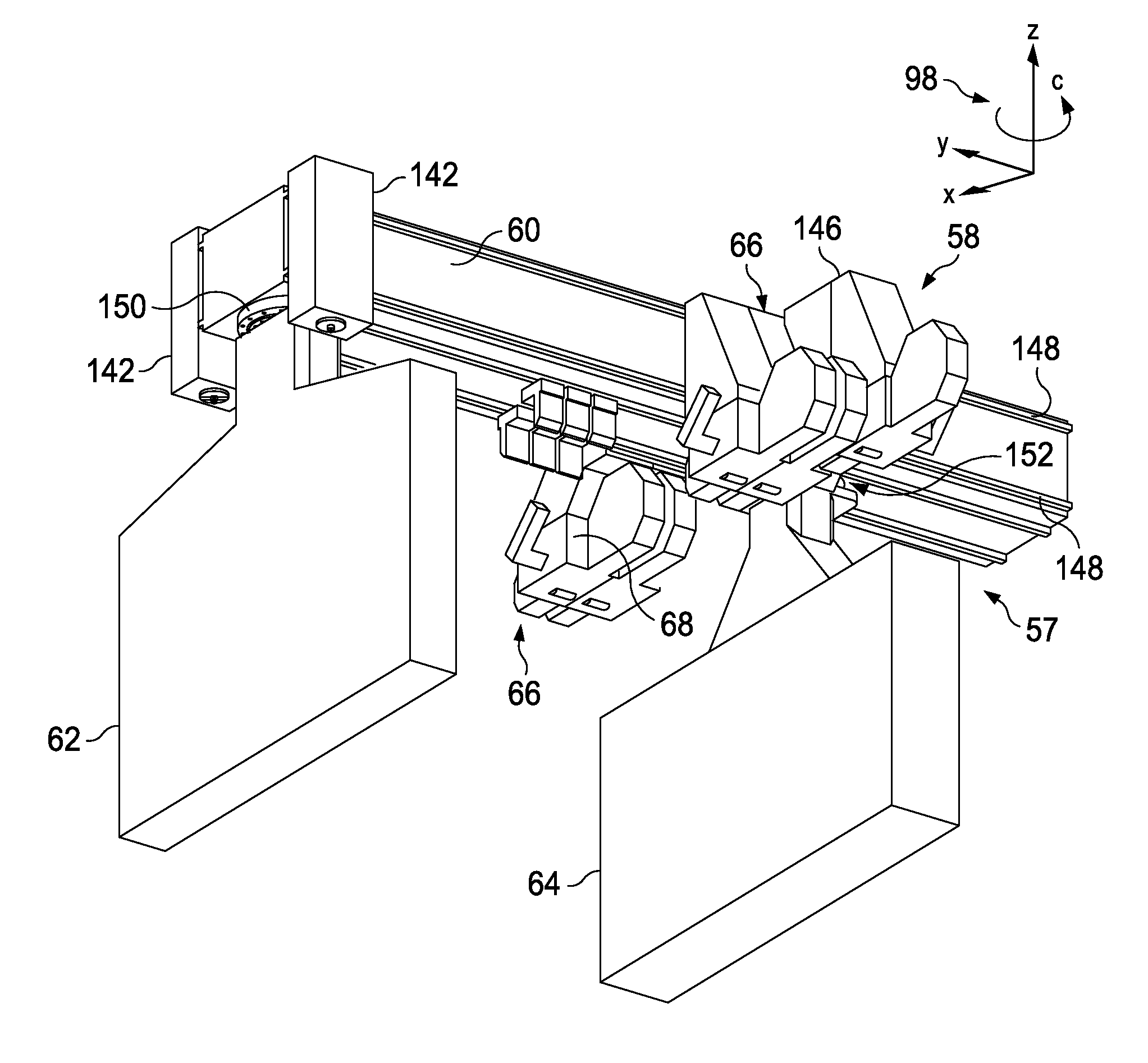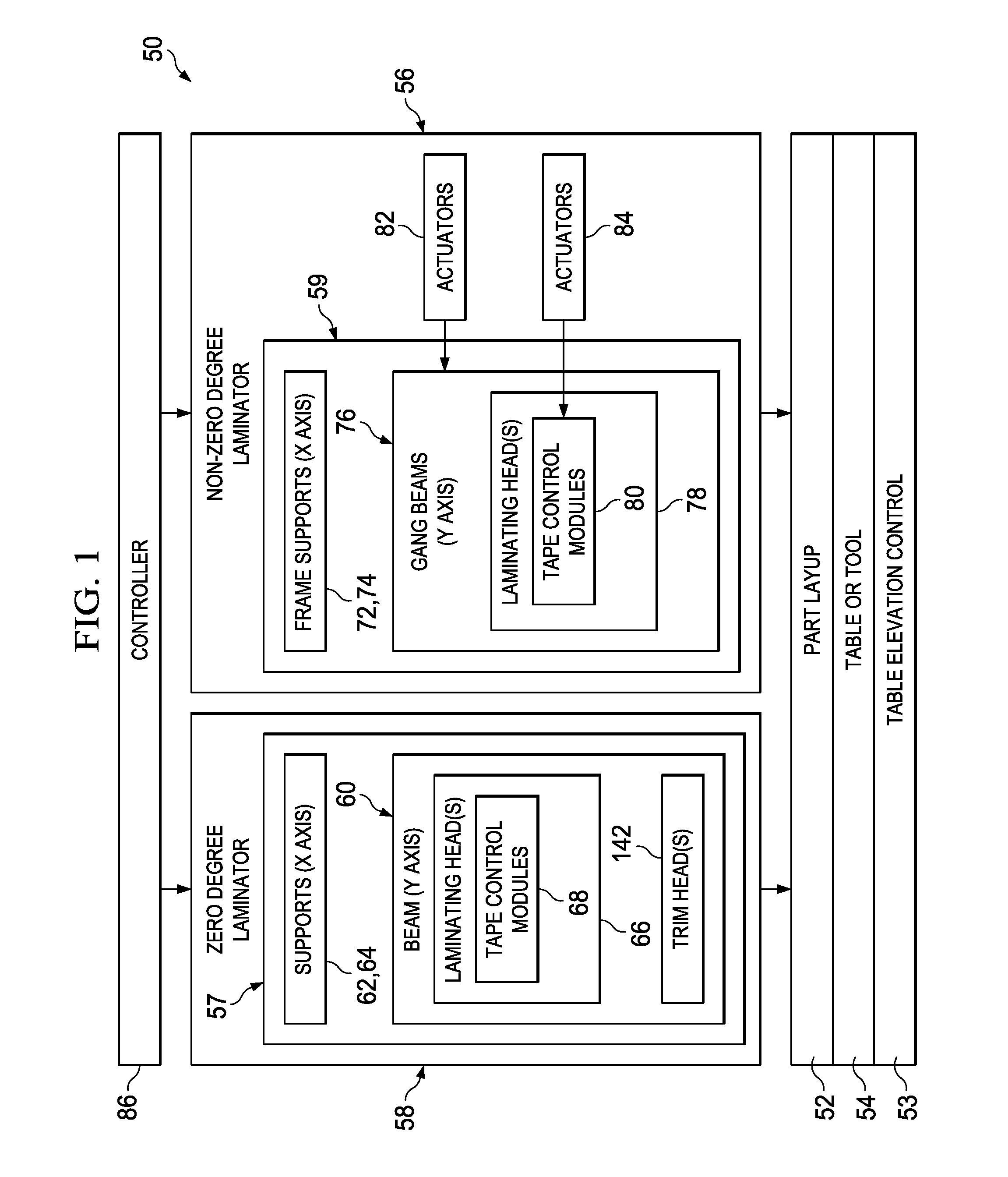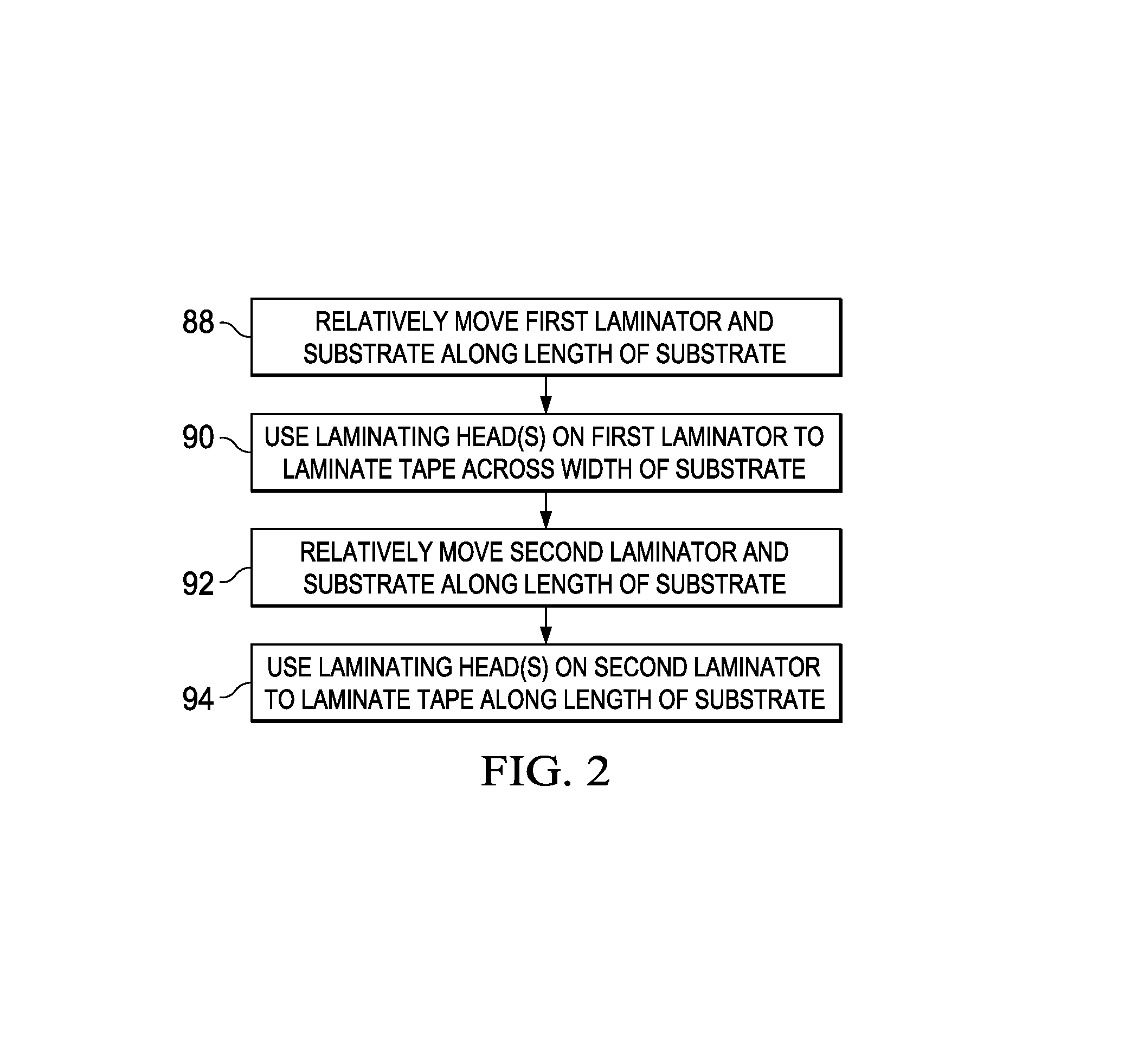Methods for laminating composites
a composite structure and lamination method technology, applied in the direction of paper hanging, mechanical control devices, instruments, etc., can solve the problems of inefficiency in laying down relatively short non-zero tape courses, narrow structures, and inconvenient laying up of relatively long structures, so as to improve wrinkle absorption measures, reduce waste, and improve the effect of width dimensions
- Summary
- Abstract
- Description
- Claims
- Application Information
AI Technical Summary
Benefits of technology
Problems solved by technology
Method used
Image
Examples
Embodiment Construction
[0058]Referring first to FIG. 1, laminating apparatus 50 for laying up a composite part 52 on a substrate which may comprise table 54 or tool, broadly comprises first and second laminators 56, 58 each automatically operated by a controller 86 which may comprise a PC, PLC (programmable logic controller) or other electronic controller. The table or substrate 54 and the laminators 56, 58 are relatively movable; in the illustrated embodiment, the laminators 56, 58 are independently movable relative to the table 54, however, in other embodiments, this relative movement may be achieved by moving the table 54 relative to the laminators 56, 58. The table 54 may include a table elevation control 53 for controlling the elevation of the table 54, and thus of the vertical distance between the part layup 52 and the laminators 56, 58. The part layup 52 may comprise multiple plies (not shown) of laminated composite tape, wherein each of the plies is formed by laminating multiple courses of unidire...
PUM
| Property | Measurement | Unit |
|---|---|---|
| angles | aaaaa | aaaaa |
| angle | aaaaa | aaaaa |
| angle | aaaaa | aaaaa |
Abstract
Description
Claims
Application Information
 Login to View More
Login to View More - R&D
- Intellectual Property
- Life Sciences
- Materials
- Tech Scout
- Unparalleled Data Quality
- Higher Quality Content
- 60% Fewer Hallucinations
Browse by: Latest US Patents, China's latest patents, Technical Efficacy Thesaurus, Application Domain, Technology Topic, Popular Technical Reports.
© 2025 PatSnap. All rights reserved.Legal|Privacy policy|Modern Slavery Act Transparency Statement|Sitemap|About US| Contact US: help@patsnap.com



